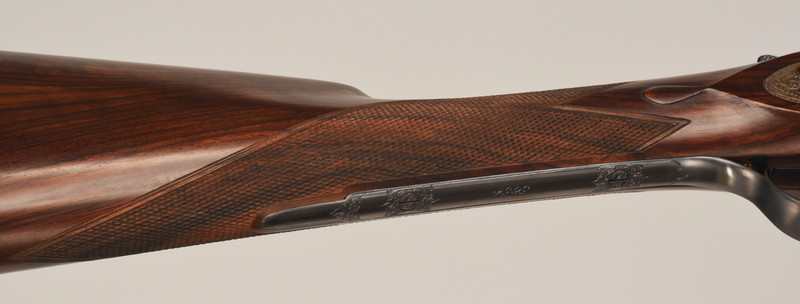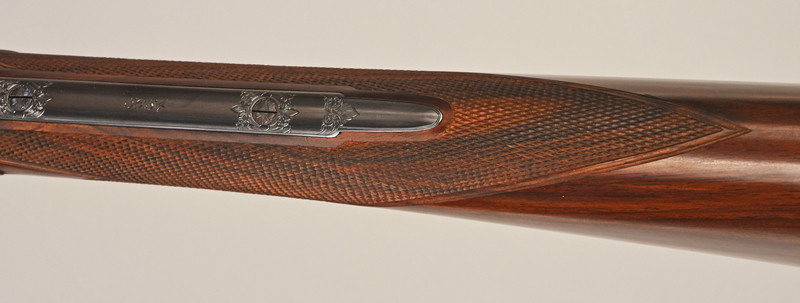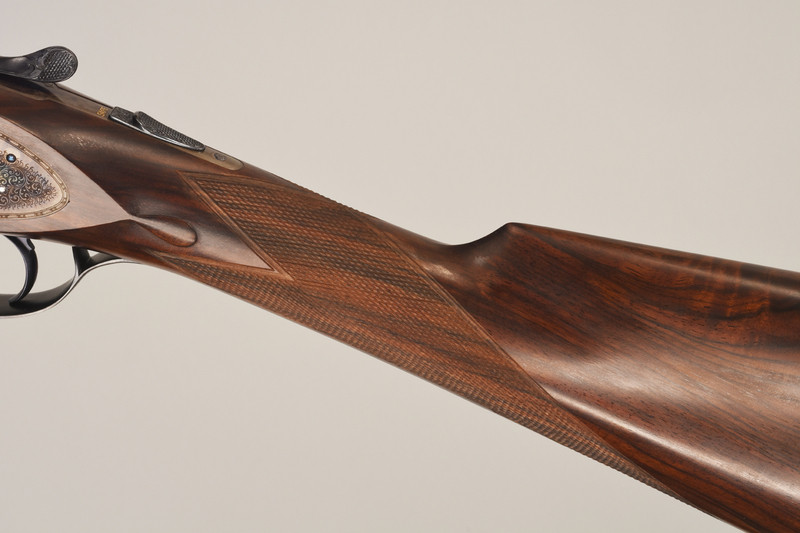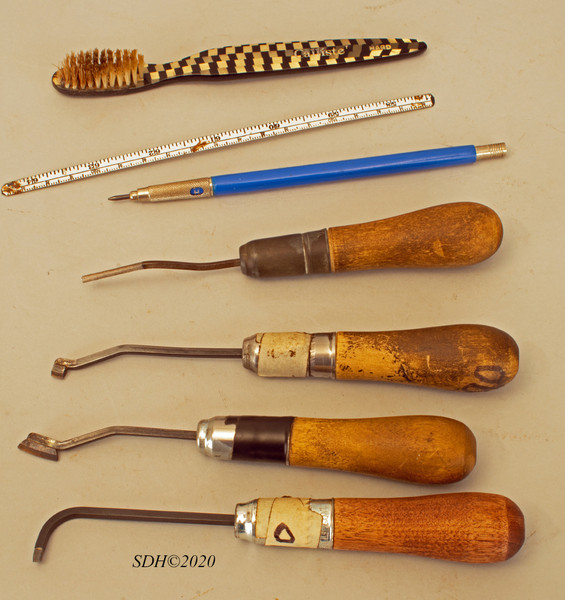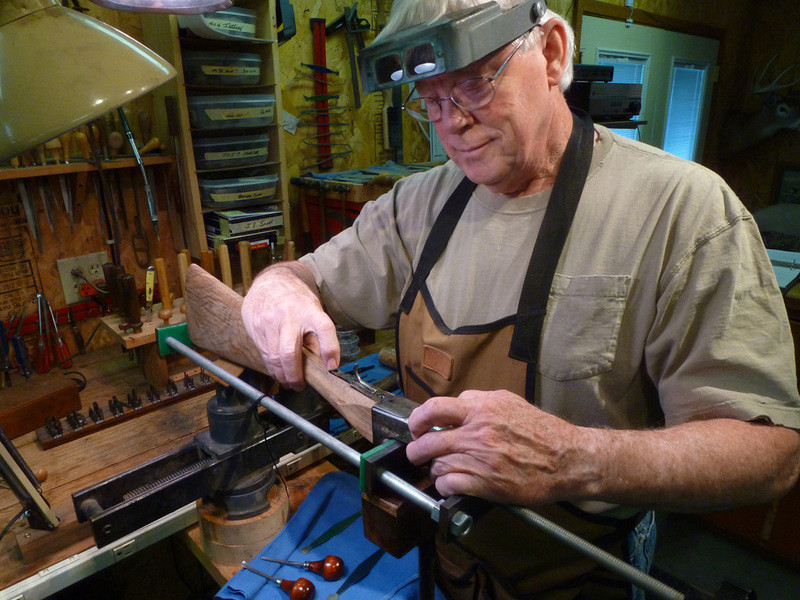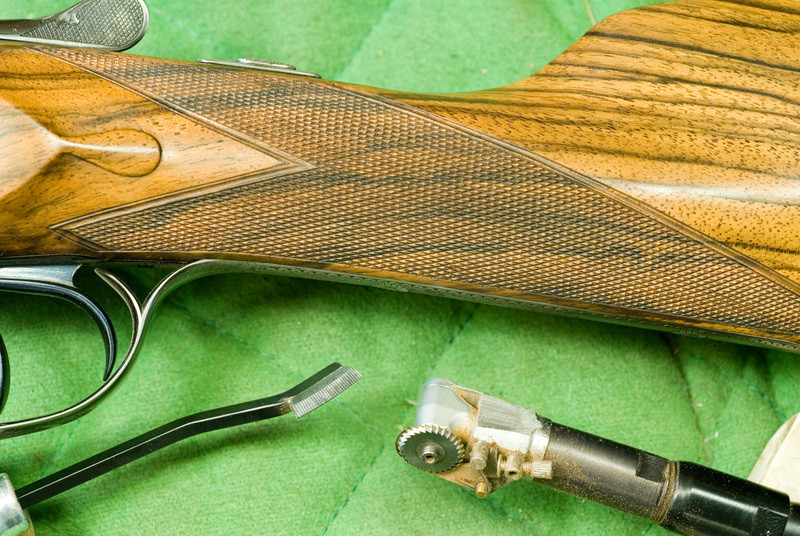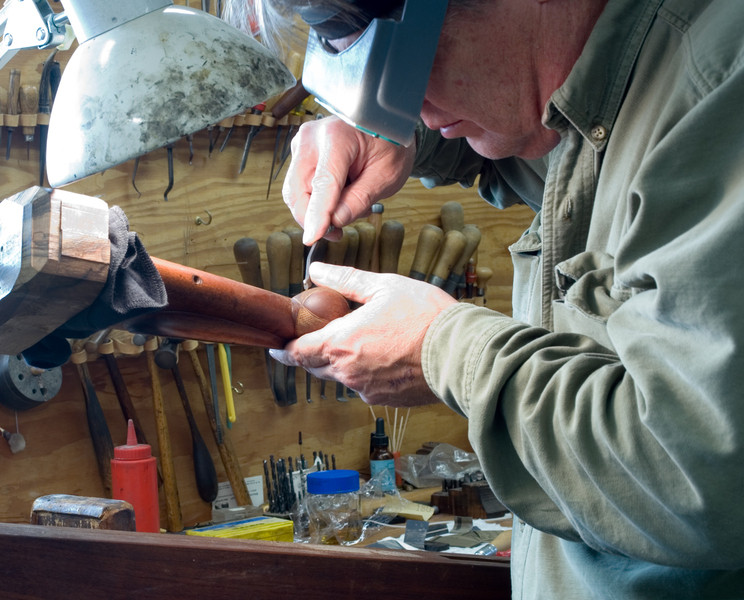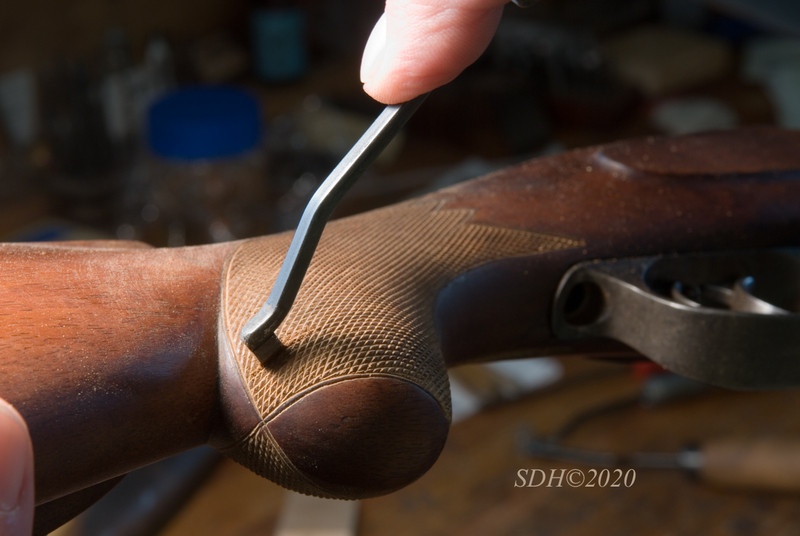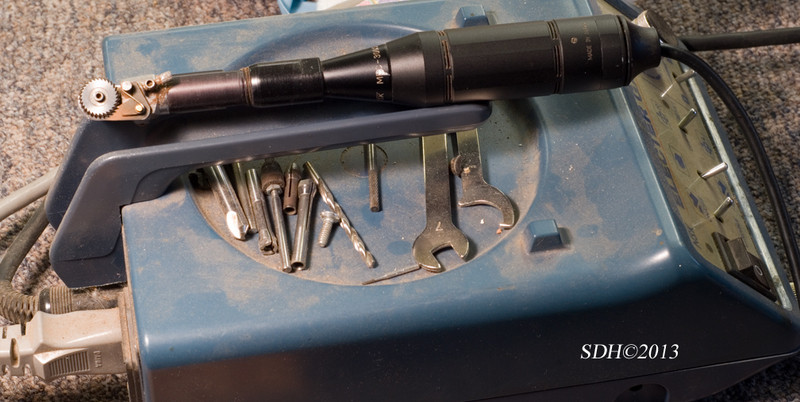The book is titled The Final Touch: a Complete Course in Gunstock Checkering, by Joel Schafer. Joe unfortunately passed away earlier this year but the book has some internet availability, I think from Ullmann Precision carbide tool maker.
I didn't really edit it, but at his request, I made suggestions to Joel of how I though that he could improve it; and he did.
BTW: As much as I consider Monte Kennedy (who I visited in 1975 at his lakefront shop and sat at his checkering horse/bench on Flathead Lake) a fabulous gunstocker and pioneer, his checking book leave too much to be desired, IMO.
Re-cutting is a great way to get started, certainly gives a familiarity with the tools. I've been teaching my apprentice Oliver Wilderson to checker the past few months. He began re-cutting a Rem 700 extensive pressed pattern. He then did straight point pattern, 4 panels on a walnut Henry .22, really dressed it up!
Now we are waiting for the pandemic to allow him to return to the shop and do a under-the-grip point pattern on a custom Marlin .44 lever gun we have been working on. Of course I have all the carbide checkering tools, layout tools, cradles, electric tool, carbide wheels and bench set-up for him to use.
I'm afraid this six+ week layoff hasn't done him any good as the more you checker the better you can get. Although I know you guys can't, or won't consider Seminars but James Tucker (who I consider and good as it gets for professional checkering) does a week long Checkering class at Lassen JC in north California. I think it might be cancelled this year? Some of my Stockmaking students took it last year and the reports were great! Cheap tuition, dorm accommodations and The Best instructions! Check it out. His work and some very good and very poor checkering is shown on the FB Forum.
Here are pics of an all-the-way-around-the-grip panel I did on a slender grip custom Bertuzzi 20 ga. It is 25lpi with mullered borders, from about 1995.

